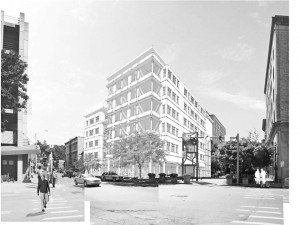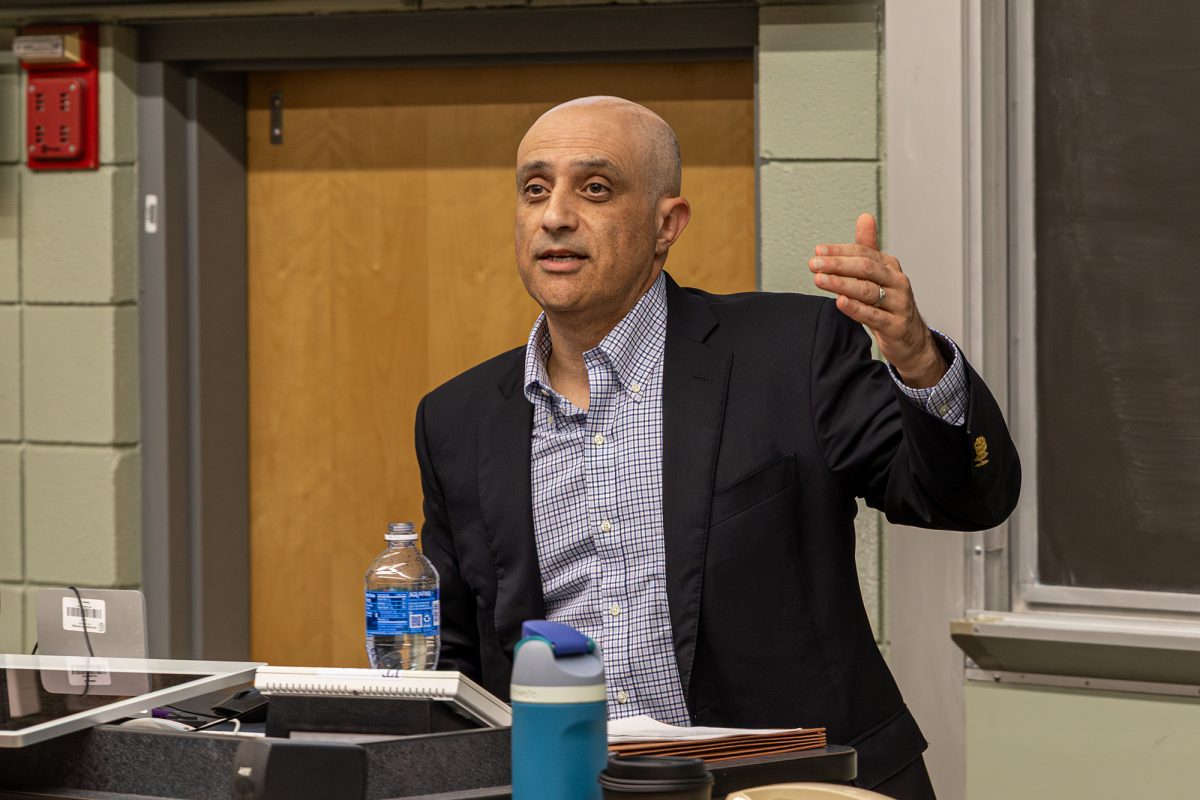In a meeting with a committee of about 25 business owners, college representatives, community planners and elected officials yesterday, the Downtown Ithaca Alliance presented a plan to increase sustainability and business downtown.

Gary Ferguson, executive director of the Downtown Ithaca Alliance, said the Downtown 2020 Strategic Plan outlines improvement projects for the downtown area over the next decade — a continuation of the goals outlined in the city’s plan for 2010 to make The Commons more sustainable and business-friendly.
Ferguson said if the plan was implemented, it would create up to 1,500 residential housing units near downtown and open the center of The Commons for an enhanced transit system. The new transit system would provide transportation from Ithaca College and Cornell University to The Commons by shuttle or streetcar.
Ferguson said DIA drafted the plan in December in hopes of making The Commons more appealing to pedestrians and reducing the need to drive. He said the plan also calls for the increased collaboration with the college, Cornell and Tompkins Cortland Community College on downtown projects.
Ferguson said the plan would act as a road map for redesigning The Commons in the next decade. He is optimistic DIA will complete a substantial part of the project as many of the alliance’s goals for the 2010 strategic plan were met.
“If everything gets implemented, it will have a significant impact on our community,” he said.
The plan is partly a response to a 2006 study that estimated the county would need 3,894 housing units by 2014. The 2010 plan created housing downtown but only 225 units — not enough to house the community’s growing population. According to census data, the county’s 2010 population has increased by 5.2 percent to 101,564 residents since 2000.
Tom Hirschl, professor and chair of the program work team on poverty and economic hardship at Cornell Cooperative extension, said people choose to live in the area because of its ample job opportunities at the colleges and local businesses. Hirschl said the local job market continues to flourish despite the state’s troubled economy because of a high number of technical workers such as teachers and computer software engineers.
“[The county] has higher order urban services, which have been less hurt by the recession and the aftermath of the recession,” he said. “Its profile is more like Manhattan than it is like any of the surrounding commons.”
Ferguson said the 1,500 housing units would reduce the need for new housing outside the city and decrease negative environmental impacts. He said building outside the city would destroy farmland and require homeowners to drive further to get into town, creating pollution in the process.
“We should strive to get as many [houses] as possible in the center of our community, because it’s the right thing to do, and it’s a cost-effective thing to do,” he said. “It’s green and sustainable.”
Ferguson said the college is the only institution not to have bought or built buildings downtown, and he would like to see that change. He said the DIA has been in communication with the college about strengthening its presence downtown, but so far nothing has been planned.
Ian Golden, owner of Finger Lakes Running & Triathlon Company, said the meeting was his first exposure to the plan. He said he currently doesn’t get much business from students at the college and sees how the proposed shuttle between the college and The Commons would increase the amount of business he receives.
If the plan is implemented, he said he would put more money into attracting student shoppers.
“I may push to put renewed marketing efforts into Ithaca College knowing that it would be more tangible to get more students down and onto the commons,” he said.
Anthony Hopson, assistant vice president for community and government relations and a DIA board member, said the college has no immediate plans to contribute financially or build near The Commons. He said the college is focused on campus projects like the Athletics and Events Center and will not consider contributing to the downtown projects.
“There are some infrastructural kinds of improvements that we need to do on this campus, so our investment is with this campus,” he said.
Jean McPheeters, president of the Tompkins County Chamber of Commerce and head of the plan’s housing development project, said she expects to encounter challenges as the plan moves forward.
“I don’t expect this to go through as a slam dunk,” she said. “It’s going to require a lot of discussion, a lot of explanation and a lot of people really saying what they want.”
Ferguson said DIA has not decided on a timetable for the progression of the redesign, but he would like to move forward as soon as possible so downtown Ithaca can see benefits of the project in the near future.
“We want to do this as soon as we can,” he said. “We want to figure out the best ways to do it that makes sense for our community.”








